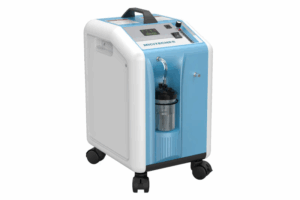Filarial infections are a group of parasitic diseases caused by thread-like roundworms known as filariae. These infections are typically transmitted by mosquito bites and are most common in tropical and subtropical regions. Among the various medications available to combat these debilitating diseases, Banocide Forte Buy Online has remained a trusted and effective treatment for decades. Known for its role in controlling lymphatic filariasis and other parasitic conditions, Banocide Forte continues to be an essential component in public health programs across the globe.
This article explores what Banocide Forte is, how it works, its role in treating filarial infections, dosage guidelines, side effects, and precautions.
What Is Banocide Forte?
Banocide Forte is a brand-name medication containing the active ingredient Diethylcarbamazine citrate (DEC). It belongs to the anthelmintic class of drugs, which are used to eliminate parasitic worms from the body. DEC was first introduced in the 1940s and is still widely prescribed for the treatment and management of lymphatic filariasis, loiasis, and tropical pulmonary eosinophilia.
Each Banocide Forte tablet typically contains 100 mg of Diethylcarbamazine and is available in oral form.
Understanding Filarial Infections
Filarial infections are caused by various species of nematodes (roundworms) that are transmitted by insect vectors, particularly mosquitoes. These parasites inhabit the lymphatic system, subcutaneous tissues, or eye tissues and can cause a wide range of symptoms. The most common filarial diseases include:
-
Lymphatic Filariasis (caused by Wuchereria bancrofti, Brugia malayi, and Brugia timori)
-
Loiasis (African eye worm, caused by Loa loa)
-
Tropical Pulmonary Eosinophilia
-
Onchocerciasis (river blindness, though not typically treated with Banocide)
Filarial infections can lead to chronic swelling, lymph node enlargement, elephantiasis, and significant disability, especially if left untreated.
How Banocide Forte Works
Banocide Forte acts by targeting the microfilariae, which are the larval forms of the filarial parasites circulating in the blood and tissues. Diethylcarbamazine:
-
Immobilizes and kills microfilariae in the bloodstream.
-
Alters the surface structure of the parasites, making them more susceptible to attack by the host’s immune system.
-
Inhibits the arachidonic acid metabolism in the worms, weakening their survival mechanisms.
While it is most effective against microfilariae, DEC can also act on adult worms to some extent, especially with prolonged use.
Conditions Treated with Banocide Forte
1. Lymphatic Filariasis
This is the most common indication for Banocide Forte. It helps reduce the number of microfilariae in the blood, preventing transmission and progression to severe lymphatic damage or elephantiasis.
2. Loiasis (African Eye Worm)
Banocide Forte is used to manage infections caused by Loa loa, although treatment must be approached carefully due to the risk of severe allergic reactions from rapid killing of microfilariae.
3. Tropical Pulmonary Eosinophilia
A hypersensitivity reaction caused by filarial antigens in the lungs. Banocide Forte reduces eosinophilic inflammation and improves respiratory symptoms.
4. Other Parasitic Infections
DEC may occasionally be used for certain other parasitic infections under specialist guidance.
Dosage and Administration
The exact dosage of Banocide Forte depends on the individual’s age, weight, and specific condition being treated. A healthcare provider will determine the appropriate dosing schedule, but general guidelines include:
-
Adults and children over 10 years: Typically, 6 mg/kg/day divided into three doses for 12 days.
-
Children under 10 years: Dose is adjusted according to body weight.
In mass drug administration (MDA) programs for lymphatic filariasis, a single annual dose is often given in combination with albendazole or ivermectin to reduce disease transmission.
Important Tips:
-
Always take Banocide Forte with food to minimize gastrointestinal upset.
-
Complete the full course of treatment, even if symptoms improve early.
Benefits of Banocide Forte in Filarial Treatment
✅ Proven Efficacy
Banocide Forte has decades of clinical use and a strong track record in effectively reducing parasite loads.
✅ Prevents Complications
By reducing microfilariae levels, the drug helps prevent complications like elephantiasis, lung damage, and disability.
✅ Public Health Impact
Banocide Forte plays a key role in global programs to eliminate lymphatic filariasis, making it vital in community health efforts.
✅ Oral Administration
Being an oral medication, Banocide Forte is easy to administer, even in remote or rural settings.
Potential Side Effects
While Banocide Forte is generally well-tolerated, some individuals may experience side effects, especially when the body reacts to dying parasites. These include:
-
Fever
-
Headache
-
Muscle aches
-
Nausea or vomiting
-
Dizziness
-
Allergic skin reactions (rash, itching)
-
Swollen lymph nodes
In rare cases, severe allergic or inflammatory responses may occur due to rapid killing of microfilariae, especially in high parasite load conditions like loiasis.
Precautions and Warnings
Before starting Banocide Forte, consider the following precautions:
-
Allergic Reactions: Individuals with a known allergy to DEC should avoid this medication.
-
Loa loa Infections: Must be monitored carefully due to risk of severe side effects.
-
Liver or Kidney Disease: Use with caution in patients with impaired liver or kidney function.
-
Pregnancy and Breastfeeding: Consult a healthcare provider before use. Banocide Forte is not usually recommended during pregnancy unless clearly needed.
-
Drug Interactions: Let your doctor know about any other medications or supplements you’re taking.
Role in Disease Elimination Programs
Banocide Forte is central to World Health Organization (WHO) strategies for the elimination of lymphatic filariasis. It is often distributed through mass drug administration (MDA) programs in combination with other antiparasitic agents.
By reducing the reservoir of microfilariae in the human population, the drug helps interrupt the transmission cycle and protect communities from long-term disability.
Conclusion
Banocide Forte stands as a powerful and reliable medication for the treatment of filarial infections, particularly lymphatic filariasis and loiasis. Its ability to target both microfilariae and, to a lesser extent, adult worms makes it an essential component of anti-parasitic therapy and public health campaigns aimed at disease elimination.
However, like all potent medications, Banocide Forte must be used under the supervision of a healthcare provider, with careful attention to dosing and side effects. With proper use, this medication can play a life-changing role in alleviating parasitic burdens and improving the quality of life for millions, especially in endemic regions.





